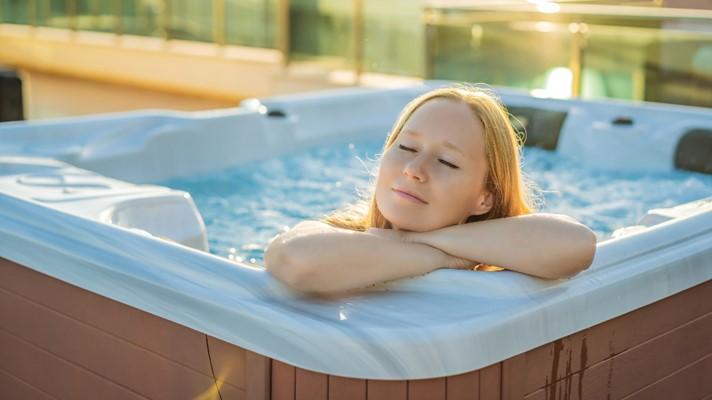Ah, the soothing soak in a steaming hot tub after a long day – pure bliss, right? But hold on a second, have you considered the environmental impact of the chemicals keeping your spa sparkling clean? Traditional hot tub chemicals, while effective, often contain harsh ingredients that can harm delicate ecosystems and contribute to pollution.
The good news is that soaking sustainably is possible. With a few tweaks to your hot tub routine, you can transition to green alternatives that are gentle on the environment without sacrificing water quality.
Let's take a dip into the world of eco-friendly hot tub chemicals.
What are Hot Tub Chemicals?
Hot tub chemicals keep the water in your hot tub clean, sanitised, and balanced. They are essential for maintaining a safe and enjoyable soaking experience.
There are four main types of hot tub chemicals:
Sanitisers
These kill harmful microorganisms that can cause skin irritation, respiratory problems, and even serious illnesses. Common sanitisers include chlorine, bromine, and non-chorine shock.
Balancers
These chemicals help to keep the pH level of your hot tub water in the correct range. The pH level measures how acidic or basic the water is. Maintaining the correct pH level is important to prevent skin irritation and damage to your hot tub equipment.
Shock
Shock oxidises contaminants in your hot tub water, such as body oils and lotions. It is typically used weekly or after heavy use.
Preventatives
These chemicals help to prevent problems such as scaling, foaming, and algae growth.
In addition to these four main types of chemicals, there are also several other hot tub tablets or products that you may want to use, such as enzymes, clarifiers, and stain removers.
Understanding the Ripple Effect
Before we splash into specifics, let's talk about the "why." Traditional chlorine and bromine-based sanitisers, while effective, come with drawbacks.
Chlorine, harsh on skin and eyes, leaves that telltale "pool smell" and releases harmful byproducts. Bromine, though milder, still poses environmental concerns and requires additional chemicals for optimal performance. Both contribute to chlorine-resistant bacteria, requiring stronger doses, further perpetuating the cycle.
Switching to eco-friendly alternatives offers a breath of fresh air (literally!). These alternatives often use natural ingredients like minerals or plant extracts, minimising environmental impact and potential health risks. Plus, they're gentler on your skin and the delicate ecosystem of your backyard.
Making Waves for a Greener Future
So, you're ready to make the plunge? Here's your starter kit for navigating the eco-friendly hot tub chemical ocean:
1. Sanitising with a Conscience
Mineral Magic
Ditch the chlorine and explore mineral sanitiser systems, often using copper or silver ions. These are gentler on the skin, require less maintenance, and produce fewer harmful byproducts. Imagine your hot tub as a self-cleaning haven, naturally fighting bacteria with a touch of natural magic.
Oxygen's Bubbles of Goodness
Non-chlorine shock uses activated oxygen to kill bacteria and is considered generally eco-friendly. However, remember, consistency is key – you might need more frequent application than chlorine. Think of it like regularly cleaning your house with natural products – a little more effort, but a healthier outcome.
2. Balancing the Scales: pH and Alkalinity
Imagine your hot tub as a balanced ecosystem, where natural minerals work harmoniously to keep the water perfect for your soak. Opt for natural pH and alkalinity adjusters made from baking soda, borax, or citric acid. These are readily available, biodegradable, and kinder to the environment.
3. Algae? Not on Our Watch!
Enzymes: Nature's Clean-Up Crew
Harsh algaecides are out, and enzyme-based alternatives are in! These break down algae naturally and are non-toxic to humans and the environment. Think of them as tiny green Pac-Mans, gobbling up algae without harming anything else.
Prevention is Key
Remember, consistent filtration, proper water balancing, and covering your hot tub when not in use are the ultimate algae deterrents. Think of it like maintaining a healthy garden – a little proactive care goes a long way in preventing unwanted visitors.
4. Beyond the Basics: Advanced Eco-Consciousness
Reduce, Reuse, Recycle (Chemicals)
Imagine treating your chemicals like precious resources, using only what you need. Test your water regularly and only add chemicals when necessary. Overdosing can be harmful and create unnecessary waste.
Consider Ozone or UV Systems
These advanced systems help break down contaminants and reduce overall chemical dependence. Think of them as high-tech filters, providing extra protection for your water and the environment.
Choose Brands with a Green Conscience
Look for brands committed to sustainability and prioritise biodegradable, phosphate-free formulas. Imagine supporting companies that share your values and are actively working towards a cleaner future.
The Green Soak Awaits
Transitioning to eco-friendly hot tub chemicals might require some adjustments, but the benefits are like waves crashing onto the shore – vast and refreshing. You'll contribute to a healthier environment, enjoying gentler water on your skin while soaking with a cleaner conscience.
Oh, and a bonus tip: Share the green wave! Talk to friends, family, and fellow hot tub enthusiasts about your switch to eco-friendly alternatives. Together, we can create a tidal wave of change and ensure cleaner, healthier soaking experiences for all.
Remember, every small step towards sustainability counts, and your eco-friendly hot tub choices can make a big splash for your dream pool!
